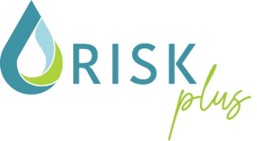


![[Translate to English:] Prüfstelle-Produktprüfung_Teststand Test centre and product testing](/fileadmin/_processed_/0/9/csm_TZW-Karlsruhe_Pruefung_Geraete-Teststand_377188946c.jpg)

















In June 2023, the new Drinking Water Ordinance (“Trinkwasserverordnung”, TrinkwV) came into force in Germany. Since then, water supply companies are obligated, among other things, to implement continuous risk management for water supply facilities (§ 34 TrinkwV). At TZW, we support water suppliers in setting up such a risk management system in accordance with DIN-EN 15975-2, drawing on our many years of experience: Risk management in water supply has been a key issue for TZW for 20 years. Risk management for the catchment area holds a separate position in risk management. This will become even more important with the new Drinking Water Catchment Area Ordinance (Trinkwassereinzugsgebieteverordnung, TrinkwEGV) of 4 December 2023. Accordingly, the documents for the assessment of the catchment area must be submitted to the competent authority by 12 November 2025.
The project steps (see Fig. 1) are carried out in close coordination with the utility company involved and are adapted to local requirements in terms of scope and level of detail.

RiskPlus makes it possible to set up a risk management system from a single source - from the catchment area to delivery to the consumer. The web-based software offers all the necessary elements to fulfil the risk management requirements of the Drinking Water Ordinance and Drinking Water Catchment Area Ordinance. By integrating a WebGIS, numerous helpful functionalities are available with which events and risks can be mapped and analysed spatially. The software solution contains basic data for hazard carriers as well as extensive proposals for hazard events and measures.
Our "TZW_RISK" concept fulfils the legal requirements and is based on the generally recognised rules of technology. To this end, it combines expertise from the relevant TZW departments and specialist areas. Thanks to its modular structure (see Fig. 2), TZW_RISK can be flexibly adapted to local conditions and the distribution of tasks between TZW and WVU. Another advantage for our customers is that they only have one contact person at TZW that coordinates the development of the risk management system internally. In the future, TZW_RISK will be processed using the RiskPlus software solution.
Further services relating to risk management in the water sector
TZW's work is based, among other things, on:
Willmitzer, H.; Sturm, S.; Brauer, F.: Risiken für die Wasserqualität – was ist wirklich wichtig? WasserWirtschaft 115 Heft 2-3, 106-109 (2025), http://doi.org/10.1007/s35147-025-2468-3.
Müller, B. M.; Vollmer, T.; Brauer,F.; Sturm, S.; Brenner, S.; Simon, N. (2024): Risikomanagement: Wie eine praxisnahe Umsetzung der neuen Trinkwassereinzugsgebieteverordnung aussehen kann. DVGW energie | wasser-praxis, Ausgabe 5/2024.
Huber, L.; Vollmer, T.; Brauer, F.; Sturm, S.; Rickert, B.; Damons, M. (2023): Integrated Climate-resilient Water And Sanitation Safety Planning In Southern Africa: Baseline For Developing A Holistic Approach. Posterpräsentation bei der 19. IWA Leading Edge Conference on Water and Wastewater Technologies (LET), 24.-28.06.2024, Essen.
Sturm, S.; Brauer, F.; Hegewald, T.; Freier, K.: (2022) Risk Assessment and Implementing Risk Management for a Complex Drinking Water Reservoir-System in Saxony, Germany. Water Safety Conference 2022. Narvik 22-24 June 2022. Conference Proceedings. pp. 97-98; Editors: International Water Association (IWA), World Health Organization (WHO), UiT the Arctic University of Norway, Chalmers University of Technology, Sweden.
Rickert, B.; Zügner, V.; Sturm, S.; Brauer, F. (2022): Germany’s Way to WSP Through Policy Actions and Technical Standards. Water Safety Conference 2022. Narvik 22-24 June 2022. Conference Proceedings. pp. 66-68; Editors: International Water Association (IWA), World Health Organization (WHO), UiT the Arctic University of Norway, Chalmers University of Technology, Sweden.
Brauer, F.; Sturm, S.; Kaupe, M.; Schiffman, S. (2022): Risk Assessment for Groundwater Catchment Areas. Water Safety Conference 2022. Narvik 22-24 June 2022. Conference Proceedings. pp. 101-102; Editors: International Water Association (IWA), World Health Organization (WHO), UiT the Arctic University of Norway, Chalmers University of Technology, Sweden.
Brauer, F.; Sturm, S.; Fischer, T.; Gottwalt, J.; Hahne, L. (2022): Web-Based Software Application for Risk Management of Drinking-Water Supplies. Water Safety Conference 2022. Narvik 22-24 June 2022. Conference Proceedings. pp. 124-125; Editors: International Water Association (IWA), World Health Organization (WHO), UiT the Arctic University of Norway, Chalmers University of Technology, Sweden.
Brauer, F.; Sturm, S.; Hegewald, T.; Freier, K.: (2021): Risikomanagement für ein komplexes Talsperrensystem. DVGW energie | wasser-praxis 05/2021, 72-77.
Brauer, F.; Sturm, S.; Kaupe, M.; Schiffmann, S. (2019): Mehrwert des Risikomanagements für den Wasserversorger. DVGW energie | wasser-praxis 12/2019, 53-55.
Riegel, M.: Kritikalitätsanalyse für Objekte der Trinkwasserversorgung. In: Zukunftsthemen der Wasserversorgung. Veröffentlichungen aus dem Technologiezentrum Wasser 90, ISSN 1434-5765, 117-133 (2019): Identifizierung kritischer Infrastrukturen in der Wasserversorgung (KRITISGIS-T); Projekt im Auftrag des Bundesamts für Bevölkerungsschutz und Katastrophenhilfe (BBK); (2017 – 2020).
Sturm, S.: Sicherheit in der Trinkwasserversorgung – Water Safety Plans als Instrument zum Risikomanagement. In: Risiken in der Wasserversorgung. Stuttgarter Berichte zur Siedlungswasserwirtschaft., Bd. 235, 35-46 (2017).
Brauer, F.; Bethmann, D.; Kaupe, M.; Schiffmann, S. (2015): Risikomanagement für ein Kölner Wasserwerk. DVGW energie | wasser-praxis (6), S. 42–50.
Umweltbundesamt(UBA) und TZW [Hg.]; Schmoll, O.; Bethmann, D.; Sturm, S.; Schnabel, B. (2014): Das Water-Safety-Plan-Konzept: Ein Handbuch für kleine Wasserversorgungen. Dessau-Roßlau. https://www.umweltbundesamt.de/sites/default/files/medien/374/publikationen/wps-handbuch-web.pdf.
Contact



Projects
The revision of nitrate comtaminated areas (so-called "Rote Gebiete") is currently the subject of debate. In some areas, farmers and water suppliers…
Read moreTo investigate the increasing spatio-temporal variability of groundwater recharge in the future, both locally and regionally, and its specific effects…
Read moreIn order to counteract future negative impacts of extreme weather events on the water quality of stream waters, practical prevention and management…
Read more